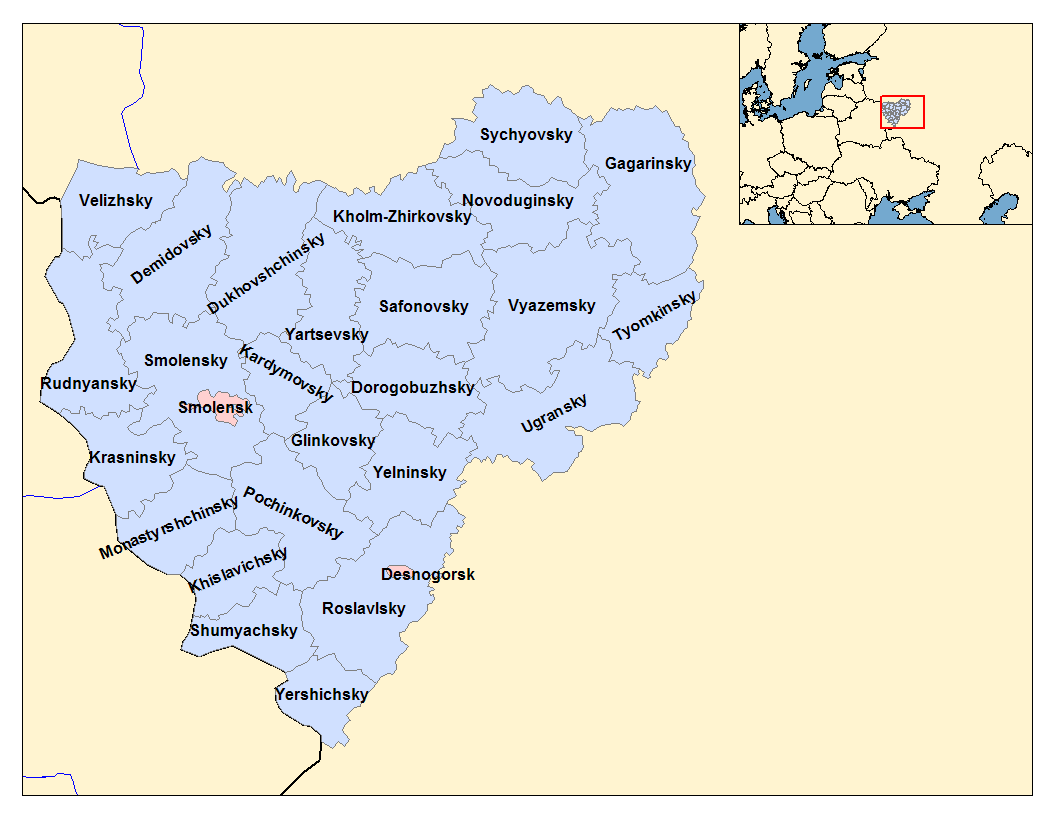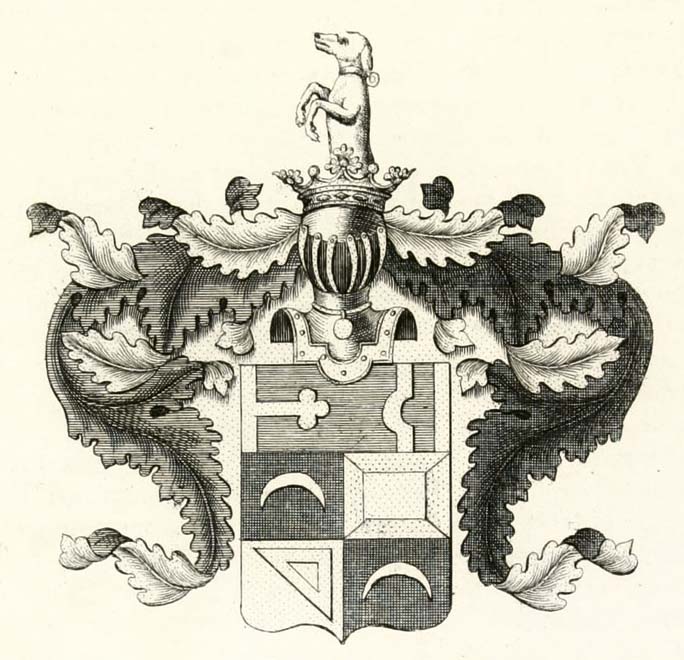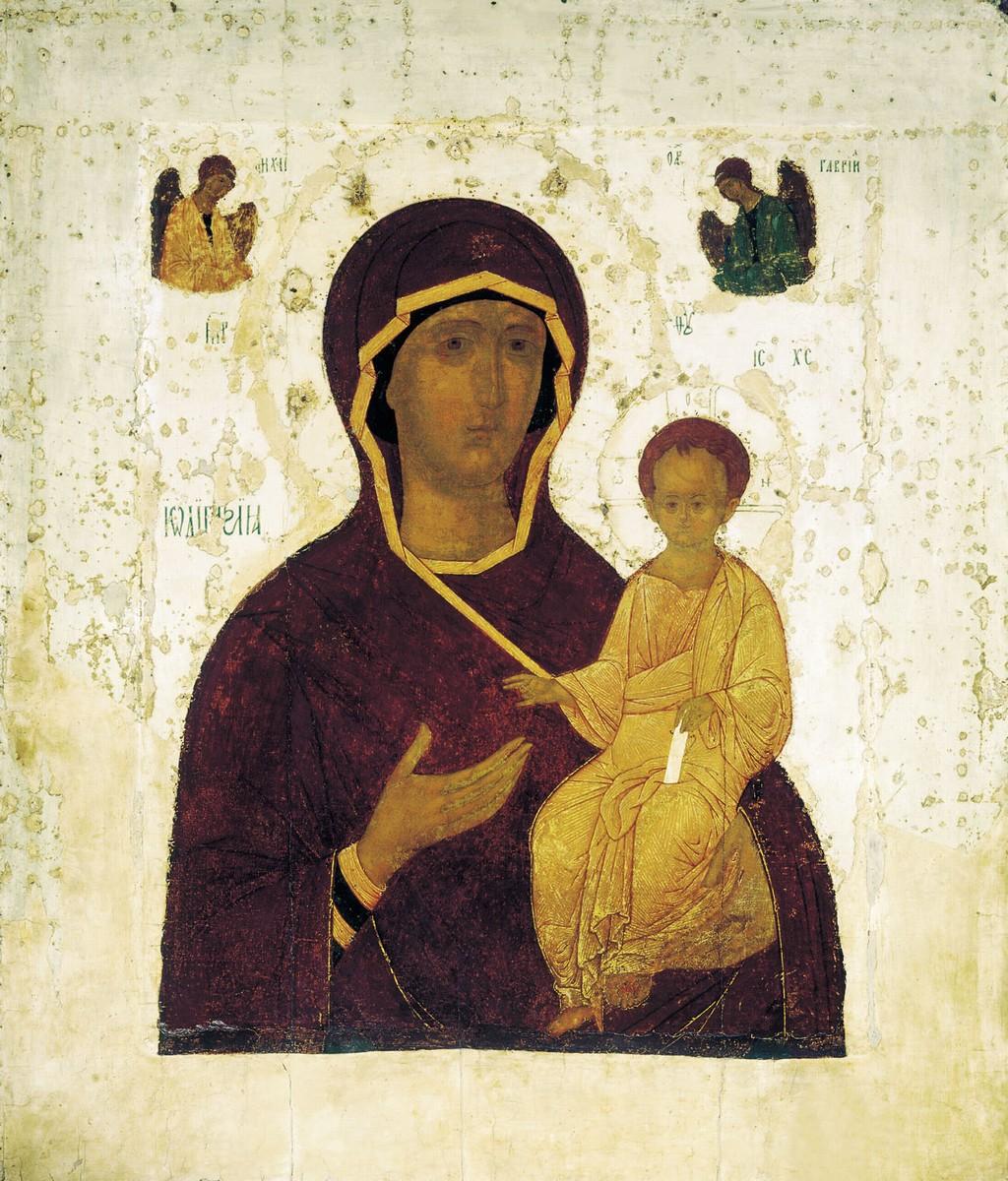|
Viazma
Vyazma (russian: Вя́зьма) is a town and the administrative center of Vyazemsky District in Smolensk Oblast, Russia, located on the Vyazma River, about halfway between Smolensk, the administrative center of the oblast, and Mozhaysk. Throughout its turbulent history, it defended western approaches to Moscow. Population: 44,000 (1970). Medieval history and monuments Vyazma was first mentioned in a chronicle under the year of 1230, although it is believed to be much older than that. The town was named after the river, whose name was from Russian word "" (''vyaz), meaning "bog" or "swamp".Е. М. Поспелов. "Географические названия мира". Москва, 1998, стр. 108. At the time, the town belonged to a lateral branch of the Rurikid House of Smolensk, and carried on a lively trade with Narva on the Gulf of Finland. In 1403, the local princes were expelled by Lithuanians to Moscow, where they took the name of Princes Vyazemsky. The ... [...More Info...] [...Related Items...] OR: [Wikipedia] [Google] [Baidu] |
Vyazma River
The Vyazma () is a river in the Smolensk Oblast in Russia. It is a left tributary of the Dnieper. The length of the river is 147 km. The area of its basin is 1350 km². In ancient times, the Vyazma River was a part of a route that connected the upper basins of the , , and Dnieper with the help of |
Smolensk Oblast
Smolensk Oblast (russian: Смоле́нская о́бласть, ''Smolenskaya oblast''; informal name — ''Smolenschina'' (russian: Смоле́нщина)) is a federal subject of Russia (an oblast). Its administrative centre is the city of Smolensk. As of the 2010 Census, its population was 985,537. Geography The oblast was founded on 27 September 1937.Исполнительный комитет Смоленского областного совета народных депутатов. Государственный архив Смоленской области. "Административно-территориальное устройство Смоленской области. Справочник", изд. "Московский рабочий", Москва 1981. Стр. 8 It borders Pskov Oblast in the north, Tver Oblast in the northeast, Moscow Oblast in the east, Kaluga Oblast in south, Bryansk Oblast in the southwest, and Mogilev and Vitebsk Oblast ... [...More Info...] [...Related Items...] OR: [Wikipedia] [Google] [Baidu] |
Alexander Pushkin
Alexander Sergeyevich Pushkin (; rus, links=no, Александр Сергеевич ПушкинIn pre-Revolutionary script, his name was written ., r=Aleksandr Sergeyevich Pushkin, p=ɐlʲɪkˈsandr sʲɪrˈɡʲe(j)ɪvʲɪtɕ ˈpuʂkʲɪn, a=ru-Pushkin.ogg; ) was a Russian poet, playwright, and novelist of the Romantic era.Basker, Michael. Pushkin and Romanticism. In Ferber, Michael, ed., ''A Companion to European Romanticism''. Oxford: Blackwell, 2005. He is considered by many to be the greatest Russian poetShort biography from University of Virginia . Retrieved 24 November 2006.Allan Rei ... [...More Info...] [...Related Items...] OR: [Wikipedia] [Google] [Baidu] |
Mikhail Miloradovich
Count Mikhail Andreyevich Miloradovich (russian: Граф Михаи́л Андре́евич Милора́дович, sh-Cyrl, Гроф Михаил Андрејевић Милорадовић ''Grof Mihail Andrejević Miloradović''; – ), spelled Miloradovitch in contemporary English sources, was a Russian general prominent during the Napoleonic Wars, who, on his father side, descended from Serbian noble family and the katun clan of Miloradović from Hum, in present-day Bosnia and Herzegovina. He entered military service on the eve of the Russo-Swedish War of 1788–1790 and his career advanced rapidly during the reign (1796-1801) of Emperor Paul I. He served under Alexander Suvorov during Italian and Swiss campaigns of 1799. Miloradovich served in wars against France and the Ottoman Empire, earning distinction in the Battle of Amstetten (1805), the capture of Bucharest (1806), the Battle of Borodino (September 1812), the Battle of Tarutino (October 1812) an ... [...More Info...] [...Related Items...] OR: [Wikipedia] [Google] [Baidu] |
French Invasion Of Russia
The French invasion of Russia, also known as the Russian campaign, the Second Polish War, the Army of Twenty nations, and the Patriotic War of 1812 was launched by Napoleon Bonaparte to force the Russian Empire back into the continental blockade of the United Kingdom. Napoleon's invasion of Russia is one of the best studied military campaigns in history and is listed among the most lethal military operations in world history. It is characterized by the massive toll on human life: in less than six months nearly a million soldiers and civilians died. On 24 June 1812 and the following days, the first wave of the multinational crossed the Niemen into Russia. Through a series of long forced marches, Napoleon pushed his army of almost half a million people rapidly through Western Russia, now Belarus, in an attempt to destroy the separated Russian armies of Barclay de Tolly and Pyotr Bagration who amounted to around 180,000–220,000 at this time. Within six weeks, Napoleon lost ha ... [...More Info...] [...Related Items...] OR: [Wikipedia] [Google] [Baidu] |
Spasskaya Tower Vyazma2
{{disambiguation ...
* Spasskaya Tower of the Moscow Kremlin * Spasskaya (Saint Petersburg Metro) Spasskaya (russian: Спáсская) is the current western terminus station of the Line 4 of the Saint Petersburg Metro. It is part of the first three-way transfer station that also includes Sadovaya and Sennaya Ploshchad stations. The stati ... [...More Info...] [...Related Items...] OR: [Wikipedia] [Google] [Baidu] |
Baroque
The Baroque (, ; ) is a style of architecture, music, dance, painting, sculpture, poetry, and other arts that flourished in Europe from the early 17th century until the 1750s. In the territories of the Spanish and Portuguese empires including the Iberian Peninsula it continued, together with new styles, until the first decade of the 19th century. It followed Renaissance art and Mannerism and preceded the Rococo (in the past often referred to as "late Baroque") and Neoclassical styles. It was encouraged by the Catholic Church as a means to counter the simplicity and austerity of Protestant architecture, art, and music, though Lutheran Baroque art developed in parts of Europe as well. The Baroque style used contrast, movement, exuberant detail, deep colour, grandeur, and surprise to achieve a sense of awe. The style began at the start of the 17th century in Rome, then spread rapidly to France, northern Italy, Spain, and Portugal, then to Austria, southern Germany, and Russia. B ... [...More Info...] [...Related Items...] OR: [Wikipedia] [Google] [Baidu] |
Barbican
A barbican (from fro, barbacane) is a fortified outpost or fortified gateway, such as at an outer fortifications, defense perimeter of a city or castle, or any tower situated over a gate or bridge which was used for defensive purposes. Europe In the Middle Ages, barbicans were typically situated outside the main line of defenses, and were connected to the Defensive wall, city walls with a walled road called ''the neck''. In the 15th century, with the improvement in siege tactics and artillery, barbicans lost their significance. Barbicans were built well into the 16th century. Fortified or mock-fortified gatehouses remained a feature of ambitious French and English residences well into the 17th century. Portuguese medieval fortification nomenclature uses barbican to describe any wall outside of and lower than the main defensive wall that forms a second barrier. The barrier may be complete, extensive or only protect particularly weak areas. The more restrictive term ''gate barb ... [...More Info...] [...Related Items...] OR: [Wikipedia] [Google] [Baidu] |
Hodegetria
A Hodegetria , ; russian: Одиги́трия, Odigítria ; Romanian: Hodighitria, or Virgin Hodegetria, is an iconographic depiction of the Theotokos (Virgin Mary) holding the Child Jesus at her side while pointing to him as the source of salvation for humankind. The Virgin's head usually inclines towards the child, who raises his hand in a blessing gesture. In the Western Church this type of icon is sometimes called Our Lady of the Way. The most venerated icon of the Hodegetria type, regarded as the original, was displayed in the Monastery of the Panaghia Hodegetria in Constantinople, which was built specially to contain it. Unlike most later copies it showed the Theotokos standing full-length. It was said to have been brought back from the Holy Land by Eudocia, the wife of emperor Theodosius II (408–450), and to have been painted by Saint Luke the apostle himself. The icon was double-sided, with a crucifixion on the other side, and was "perhaps the most prominent ... [...More Info...] [...Related Items...] OR: [Wikipedia] [Google] [Baidu] |




